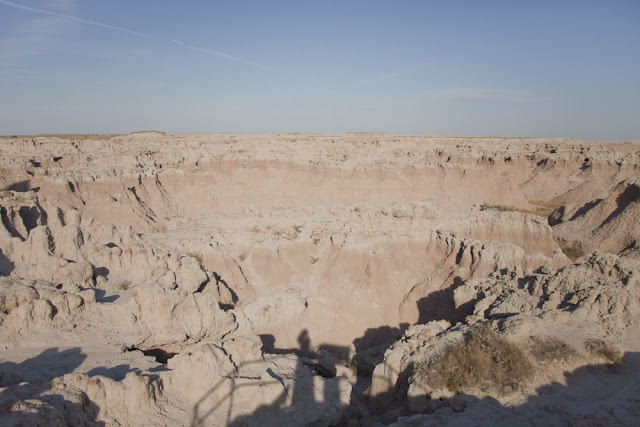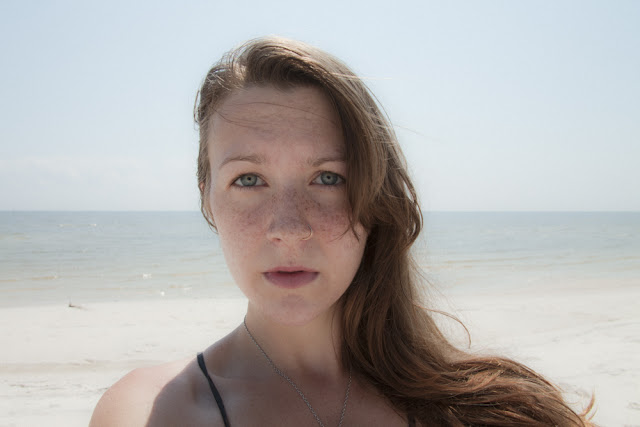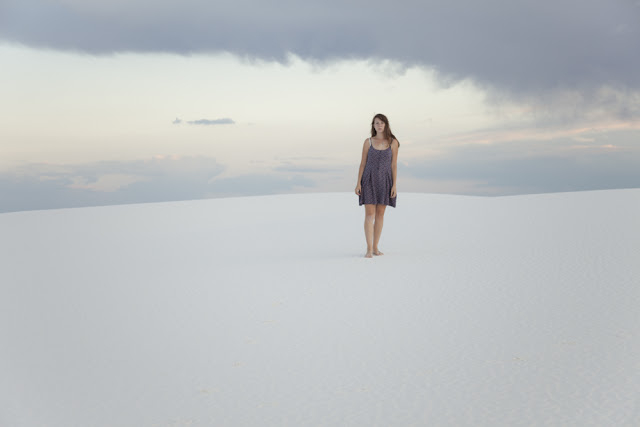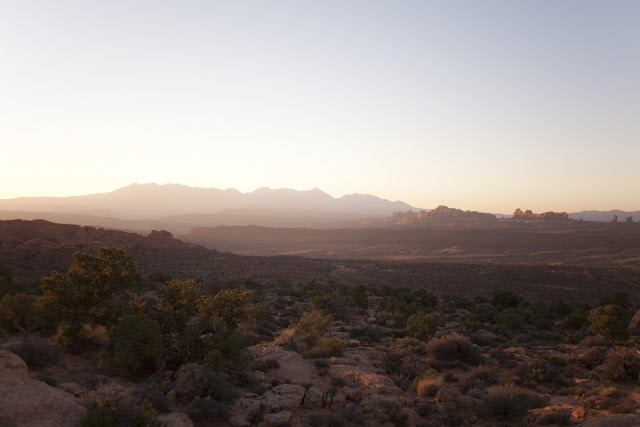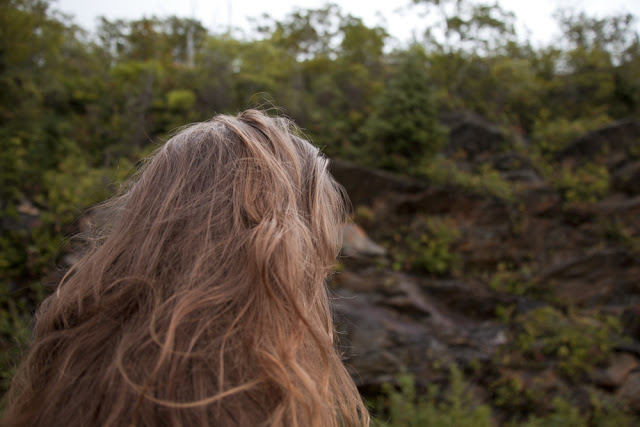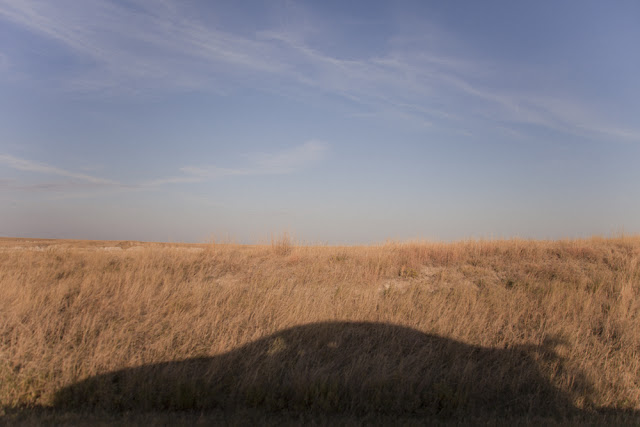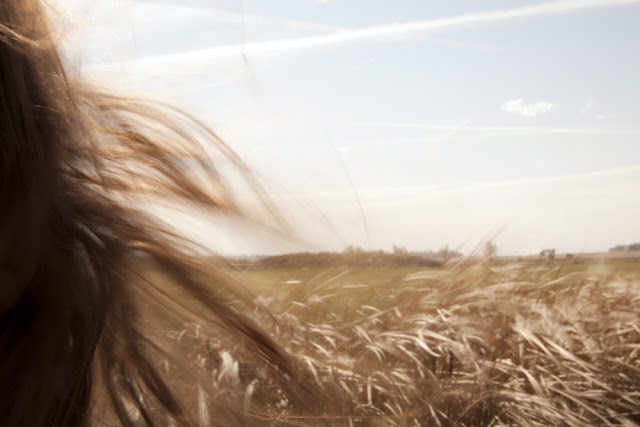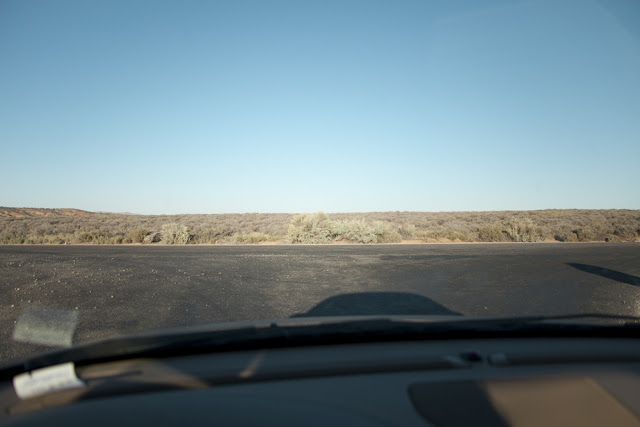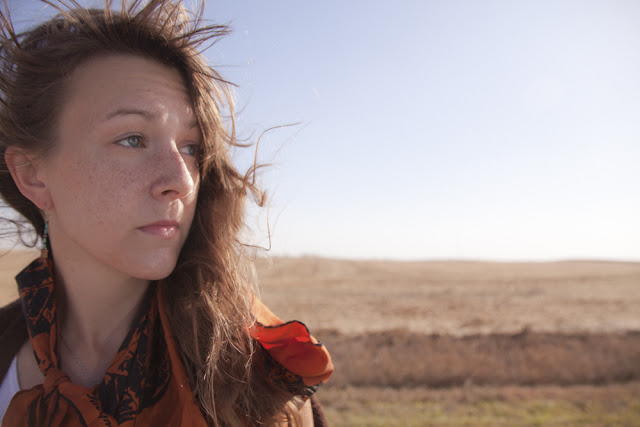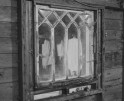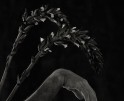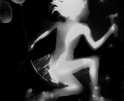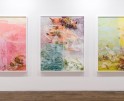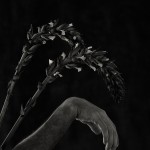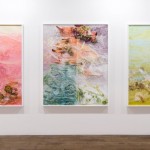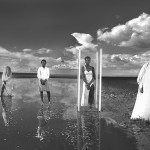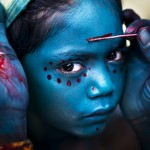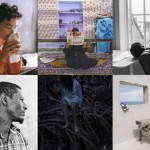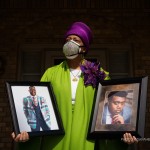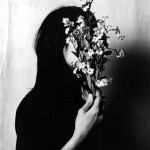Introducing editorial assistant Grant Gil as he shares a recent interview he conducted with Sarah Moore….
For the past few months I have been very grateful not only for being able to help out with LENSCRATCH but also getting to know Aline as a colleague and friend. This spring, I will be finishing my last semester at the Milwaukee Institute of Art & Design with a focus on photography. This opportunity has been a great educational tool in submersing myself in the variety of different works posted everyday, and also has let me view the art making world from a different perspective.
I was first introduced to
Sarah Moore’s work after she had been featured in Fraction Magazine, and since then we have constantly crossed paths without actually formally meeting. I then begun following her journey across country, from Philadelphia to Santa Fe, able to watch her work change and adapt based on location. I find myself transfixed on her beautiful landscapes that make me yearn for travel, but even more so I am fascinated with her raw interactions with nature that translate emotional isolation and loneliness. Because of her young age, emerging status, and her stamina to continuously work I am constantly inspired to do more, work harder. Today I am showing images from two of her series:
expanse and
Scape.
Sarah Moore was born and raised in South Dakota, where she still finds much of her inspiration for her work. She received her BFA in Photography from the Rhode Island School of Design in 2009 and has since lived and traveled throughout the country. Much of Sarah’s work deals with the ideas of loneliness, escaping, and the ways landscapes inform and shape us. Her work has been shown throughout the country and online. She is currently living and working in Santa Fe, NM, where she is trying to understand the harsh light and delve into the book-making world.
expanse:
Throughout the years I have become increasingly interested in my home of South Dakota and how the people and place shaped me and continue to influence me. Even though I appreciate many aspects of the Midwest and still long for its landscape, it represents the pinnacle of loneliness in my life.
My photography is a depiction of this loneliness. The landscapes of the Midwest are beautiful but empty, simple but overwhelming. My relationship to my home is based on love, but also thwarted by distance. Since moving from South Dakota, I continue to find solace but also conflict in the land around me. I now see many moments in my life as a way to document or construct a personal narrative of isolation, both representative of my past and indicative of my present.
Expanses can be comforting but also stifling. Distances can fuel love but also misunderstanding. The vast space of the land is something I can’t quite embrace, break free from, or understand, but it provides infinite inspiration for me.
What is you personal statement as an artist, or how exactly would you describe the work you make?
Most of my work comes from a very personal and emotional place. I photograph mostly landscapes and self-portraits. I started doing both in 2007, when I went back home to South Dakota to shoot. Focusing on landscapes has always allowed me to break free from the personal connections I have with people. Still though, I love portraiture and what a person can show in a photograph, so self-portraiture is a way for me to still use a person in my photography, while still keeping the work mainly about me.
Is this personal place derived from a specific event, or just a general emotional state?
It’s a little of both. My parents divorced when I was four because my dad is gay. This is something I’ve more than come to terms with now, but it was tough to deal with while growing up in the conservative Midwest. I think the divorce and the subsequent silence my family kept about it instilled a sense of “me versus the world.” I grew up thinking it was best to keep quiet about big issues, especially emotional ones. Then I eventually thought it was just best to keep quiet in general. So I spent my years in South Dakota sort of closing myself off from everyone, not knowing how or if I should share the important parts of myself.
After leaving South Dakota, I learned that even if I have some trust issues and some issues with the way my problems were handled, I can still try to share a part of myself through my photography. If loneliness was going to be such a big part of my life then I wanted to at least make it part of my work.
I read so much visual poetry in to your work, from the breath taking sights to the self-portraits that begin to blend in with the surroundings. I see this action of back and forth between the photographs and the photographer. I wonder why you choose to turn the camera inwards?
Photographing myself started about six years ago, when I first went back to South Dakota. I wanted to put a person in the overwhelming landscape, and I was the most accessible. Throughout the years, I’ve learned that one of the best ways to portray what a landscape and a moment mean to me is to photograph myself.
I think my self-portraiture is definitely part narcissism. But then again, isn’t most photography rather narcissistic? As photographers, we capture what or whom we want to be seen and how we want them seen. It can be a very selfish medium. Yet by showing others what or who we see, maybe we can also affect or help others.
Another part of turning the camera towards myself deals with my own issues of insecurity and loneliness. I don’t like images of myself, and in real life, I’m not often apt to open up to people. I have too many walls built up. I guess through photography I allow myself, my body, my face, and my emotions to take center stage. I get to act a bit. I get to be important. And I hopefully get to communicate with others through my images.
Do you have any specific philosophies when it comes to humans and their interactions with nature? What books, or even other work, do you look to when making the images you do?
I’m still trying to figure out what and how I feel about the human interaction with nature. I know my own relationship to nature is pretty complicated. Though I grew up in a rural place, with large expanses of land all around me, I still never felt really in tune with nature. And after living in cities for seven years, I felt even more detached from nature. Yet, I long for the land. I think many people do. I think there’s something in us that wants to be closer to nature, but we’re not sure how to do that in this increasingly electronic and cement culture.
People go camping or gazing at national parks, feeling for a moment that they’re immersed in their primitive roots. That’s about as close to nature as many live. People like to be able to feel close to the land while at the same time in control of it. I’m the same way, I admit. I bring my camera to the land with me, perhaps trying to harness my own little bit of control over the wild vastness.
Years ago, when I was starting my photography project in South Dakota, I looked a lot at Todd Hido and Larry Sultan’s work. I read a lot of theories about photography and families at that time too. For the past few years, I’ve been reading way too much David Foster Wallace. His work doesn’t deal with nature explicitly, but it does talk about human society and our alienation from each other, the landscape, and ourselves. I think I’m more interested in reading about the human psyche and weird outbursts in society than I am about humans versus nature.
Do you ever feel you are having a visual conversation with other landscape and travel photographers, both historically and in the contemporary?
It’s hard not to feel that way, honestly. There are a lot of landscape and travel photographers out there. Sometimes I’m constantly comparing my work to others’, but I try to maintain my own vision and keep a peace with myself. I get overwhelmed really easily and intimidated even more easily. It’s definitely important to be aware of your peers, both contemporary and historically, but it’s also important to forge ahead on your own. I think part of the reason I was in a rut while living in Philly was that I was just too scared to make images. I thought everyone saw better places, had better ideas, and executed their ideas better. So I just stopped creating. Obviously that’s not a good answer, so now I try to keep in tune with other work (especially landscape and self-portraiture), but I also just try to create for myself.

There is a lot of reference to time passing and travel within all of your work. In Scape there is this feeling that nothing is constant, like you are drifting from place to place.
I’ve never been good at photographing in my own backyard, so to speak. For one reason or another, escaping has become increasingly important or my photography. That has meant escaping back to where I grew up, escaping all over the country, and escaping to large city parks outside of the city.
My first large travel experience, photographically, was in the fall of 2011, when I made my work in Scape. I mostly went on that trip because it had been about two years since I really photographed. Living in Philadelphia after college put me in some sort of photographic and emotional rut, so the only way I thought to get out of it was to travel and see again. That trip was literally about escaping and reinventing.
I love traveling and seeing new places, especially landscapes. That will probably never go away in me. Yet, I also really need to travel to be alone sometimes. As I’ve mentioned, loneliness (or my illusion of it) is partially ingrained in me, and I’ve found that traveling to different landscapes helps me cope with my loneliness.
I am aware that you just moved out to Santa Fe, NM. It seems like you have lived in some very different places in America’s geography. Does shifting home this much affect your work?
Yes, it definitely does. Each place I’ve lived has a different geography and different social climate. Even though I’m not great at photographing where I live, I’m trying to get better at that. When I lived in Ohio, I had a realization that I was going to be in this strange place for about a year, so I had to make the most of it with my photography. That’s when I started photographing the large parks in and around Columbus. I tried in some way to make the Ohio land a part of me.
I’m still trying to grasp the New Mexico landscape and how this is home for me now. It seems that once I get used to a place, especially geographically, I move. It takes time for me to acclimate to a landscape, and the New Mexico one is especially difficult. I’m not used to intense sun or mountains, not to mention adobe architecture and small pueblos. It’s more of a “wild” land than most places I’ve lived, which is hard for me to grasp photographically, strangely enough.
Overall, shifting my homes helps reopen my eyes to the constants and changes in my art and myself. I’m starting to learn which terrains I appreciate and which light I want to follow. I also really enjoy the challenge of trying to make a place my own, especially through my photography.
Why exactly do you think it is so hard photographing your direct surroundings? Does the familiar become too mundane?
I think in some ways, I feel too close to my immediate surroundings. It’s not that I find the familiar mundane–in fact, I’m constantly inspired by what I see. I actually tend to post photos on Instagram of every mundane moment I have or see. Yet, when it comes to my other photography–the work I think about more and use my “real” cameras for–I always seem to need to go away to make that work.
I try to delve into some part of my emotional past and present when photographing portraits and landscapes. And I think in order for me to do that, at least right now, I need to go outside of my comfort zone, outside of my immediate space. Unfamiliar landscapes–even if they’re within mere miles of where I work, eat, and sleep–help me disconnect from my everyday life and find a part of myself that I want to explore more.
Nothing is really mundane to me. I just find different types of inspiration in different places.
Because nature is quite vast, and easily accessible, are there specific images that you strive for, that you go out to shoot, or is there spontaneity to your photographs?
When photographing in South Dakota, I usually have specific shots that I strive for. I know that landscape pretty well, and I know that it’s largely the same view everywhere you look. So I know that I need to look for a certain type of field or certain color palette when I’m there. I try to use the repetition of that landscape to my advantage, which sometimes takes a lot of pre-visualization and some sketches.
When I’m traveling to different landscapes in shorter periods of time, I tend to shoot more and shoot very spontaneously. Unfamiliar landscapes force me to be more spontaneous, and spontaneity forces me to try more things and make more images.
I like both methods of shooting, if they’re methods at all. I love the slowness of my South Dakota photography, and how it allows me to think about that one specific landscape over the years. Of course, I also love seeing a wide variety of terrains within a short period of time. The diversity of the land allows me to think about how to connect all those terrains into my life.
You deal with many over arching themes, so how do you declare a body of work finished? Does it necessarily finish when you move, such as when you left Ohio, or is there potential for it to continue?
I think there’s always some potential for most of my projects to continue, especially my work in South Dakota. I’d love to continue to photograph in Ohio as well, and since my dad lives there, that will probably happen in the future. On some level, I do declare a body of work finished once I move, since it’s easy to wrap up projects at that point. Yet, since I go back to both South Dakota and Ohio so often, I’d like to keep both of those projects open for a while.
My work in Scape is definitely finished though; at least I’m finished making the images. That project, though I didn’t know it at the time, was about a specific journey at a specific time in my life. It chronicles a road trip around the country during a time when I needed it most. Though I definitely plan on going on more road trips in the future, they won’t fit into what Scape became, because I’m not in the same personal space as I was then.
I also see many of my separate projects as part of a general whole body of work. All of my photography deals with escapism, alienation, self-searching, and the land. I don’t see an “end” to that whole project anytime soon. So for now, everything is sort of left open.
Scape:
These photographs document a journey through America. They are images of wonder and excitement,pain and loneliness, and my personal ideas of self. Additionally, they are portraits of America’s land.
I often can’t relate to America as it’s depicted through the media’s eyes. I find it difficult live up to cultural standards and societal expectations. I have trouble getting close to those closest to me. Yet, when I see America—the America of such diverse, beautiful, and nuanced terrain—I find that even if I can’t understand what America has become, what people around me have become, or what I’ve become, I can feel comfort in the landscapes.
This collection is vast. Not every photo is perfect. Immense meaning won’t be found at every turn. Rather, the photos are a way for me to both explore and escape where I live and who I am.
